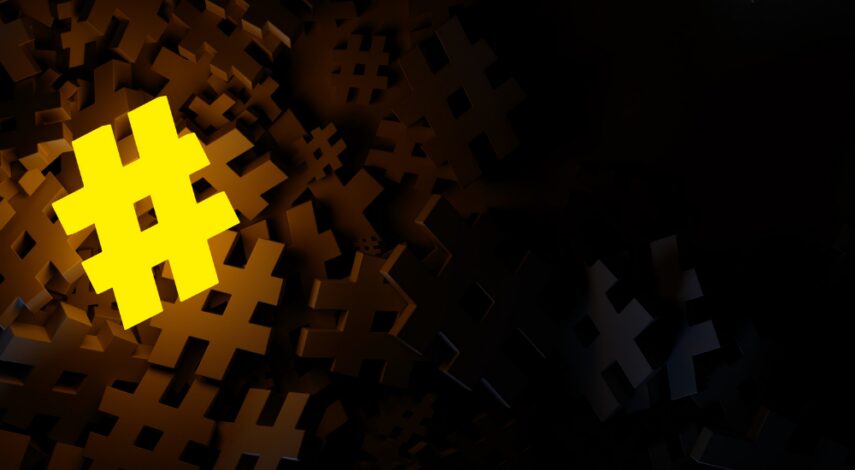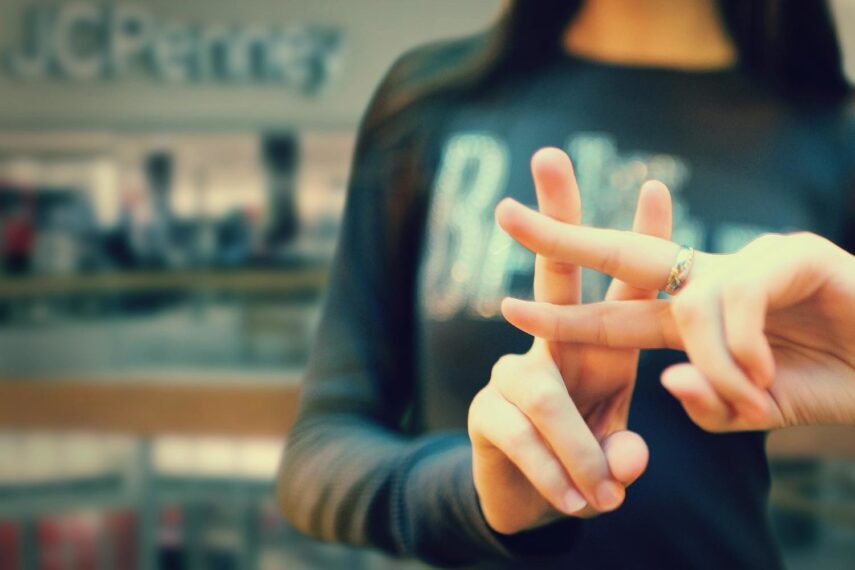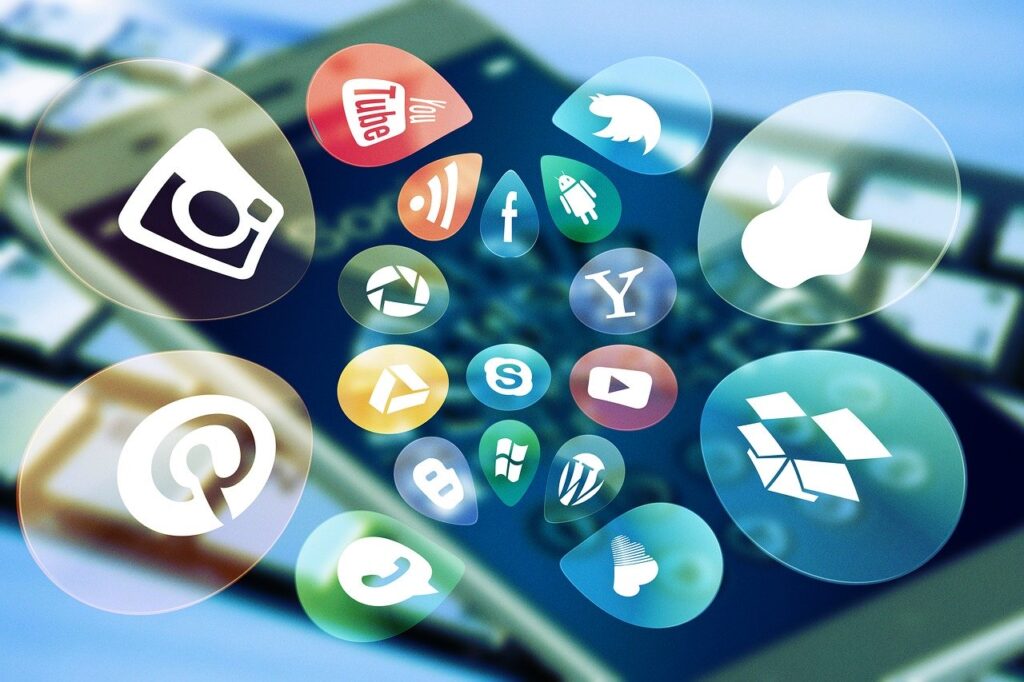Using hashtags in your social media posts can help you engage your followers, reach new audiences and promote your content. But how do you know which hashtags to use and where to use them? If the idea seems a little daunting this article is here to explain hashtags to you. Find out the best ones to use to represent your brand and tips on how to use them on different platforms.
What is a hashtag?

A hashtag is the pound symbol # placed in front of a word or phrase in a social media post. It groups together posts under a specific topic. Hashtags make content easier to find, many people search for individual hashtags on different social media platforms.
Hashtags originated on Twitter when, in 2007, Chris Messina suggested grouping posts together using the pound sign. Today, their use has spread to all social media and they are used by millions of individuals and businesses every day.
Hashtag basic rules
- They all start with a # sign and contain no punctuation, spaces or symbols.
- Ensure your account is public otherwise the post will only be seen by your followers.
- Don’t use too many words, brief is best.
- Use popular hashtags relevant to your business, unusual ones will be harder to find.
- Don’t use too many in a post, it gives a bad impression.
Why use hashtags

-
Increase engagement
Using hashtags enables you to join in conversations on social media. Other users are more likely to view and engage with your content. If they like and share your posts it will help you reach more people. One study found that tweets with hashtags received twice the click-through rate of others.
-
Expand your target audience
People searching for specific hashtags will find your content if you are using them. So, using hashtags that are relevant to your prospective customers will enable you to widen your audience.
-
Build brand awareness
Using a branded hashtag can help you promote your business and attract more customers. Exhibition stand contractor Quadrant2Design are new to this but plan to start using hashtags on their social media posts to build awareness of their brand. MD Alan Jenkins said “We’re still learning but it seems to be a good way to reach new audiences and boost our brand awareness”.
-
Support social issues
Joining onto a topical hashtag will show that you have a conscience and values. This can help you portray your business in a positive light.
-
Used for humour
Hashtags can be used for sarcasm or humour which will help you connect with your audience.
How to find the best hashtags

The most popular hashtags on Instagram are #love, #instagood and #fashion. However, on LinkedIn, which is targeted at professionals, it is #leadership and #productivity. It isn’t just about using the most popular hashtags, it’s more important to find a specific niche hashtag to suit your brand. To do this you can do the following:
-
Competitor analysis
See which hashtags are being used by your competitors and social media influencers in your area. A good way to find out the hashtags that resonate with your target audience is to find out the ones already being used. You can then join the conversation.
-
Use Hashtagify.me
Hashtagify.me helps you find the best Twitter hashtags or Instagram hashtags for your brand. It will tell you how popular each hashtag is and how often it has been used recently.
-
Find out trending hashtags
RiteTag allows you type your social media caption into the text bar and include the photo to go with it. It then comes up with hashtag suggestions to go with your post based on what is trending. You’ll find out how to get your post seen immediately and over time.
-
Get related hashtags
If you are already using a few hashtags that are working, find out related ones. These may be a little more niche, allowing you to target a specific audience. Instagram and LinkedIn both give suggestions of related hashtags.
-
Track your performance
Analyse your previous posts to find out which hashtags have worked best. You can then use these ones again in future posts and find related ones.
How to use hashtags on different platforms

It’s a good idea to tailor your hashtags to each platform as they all use them slightly differently. For example #throwbackthursday is a popular post on Instagram but doesn’t feature on Pinterest.
You can use hashtags at any point in your posts, although the maximum recommended number of hashtags per post is two. At the beginning will add emphasis, at the end, context, or you can highlight a specific word in your post. Creating a branded hashtag on Twitter is a good idea, just make sure it’s not already being used.
Twitter chats are public conversations that occur weekly or twice weekly. They involve a group of people use the same hashtag to discuss a particular topic. An example of a good recurrent Twitter chat is the weekly #SmallBizChat. Their general topic is small businesses, but they focus on more specific topics each week.
As sharing someone’s post is difficult on Instagram, hashtags have become the way to reach new audiences. A good strategy is to include a broad hashtag, then a more niche one, followed by a branded one specific to you.
With an Instagram business account, you can see Instagram Insights. Then you can view how many impressions your profile got from using each hashtag.
Facebook is seeing a shift in users moving to private groups. Hashtags can be used for grouping together content in these private groups. Search for hashtags used within private Facebook groups using the “search this group” bar under the group’s menu.
Most Facebook accounts are private, so it is harder to target new audiences on the platform, making it not the most successful arena for hashtag usage.
YouTube
You can include hashtags in the video title or description. The hashtags are hyperlinked so followers can find other videos with the same hashtags by clicking on either. By using multiple hashtags on one post, that video is then included in the relevant groups, with very little work from you. Do not use more than 15 hashtags or you may be flagged up for spammy behaviour.
You can include hashtags anywhere in your post, but remember that as it is a professional platform, they should be business focused. You can see which hashtags are trending by going to the “news and views” section on the home page. LinkedIn will sometimes promote content to other users through notifications, allowing you to reach a wider audience.
Hashtags aren’t particularly popular on Pinterest. If you are going to use them, make sure they are specific and relevant to your content. Don’t just real out the ones you have used on other platforms. Think of Pinterest as a search engine so the hashtags should accurately describe the image you have included.
Conclusion
Hashtags are a useful tool to promote your content on social media and reach new audiences. They should be used sensibly – be specific and relevant to your business. Over-using them will come across as spammy so be careful. But they offer a great opportunity to connect with your audience and increase your social media presence.







